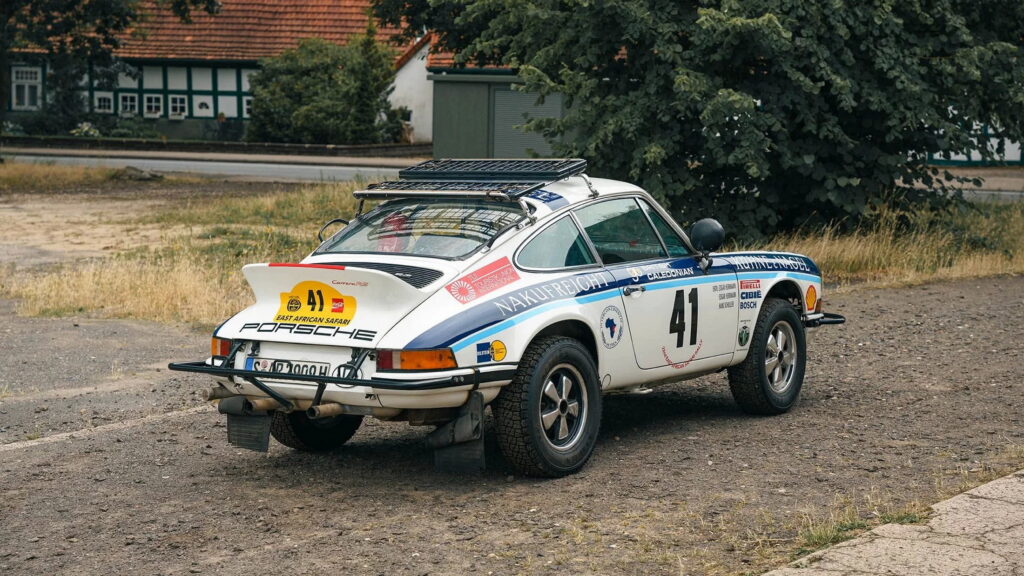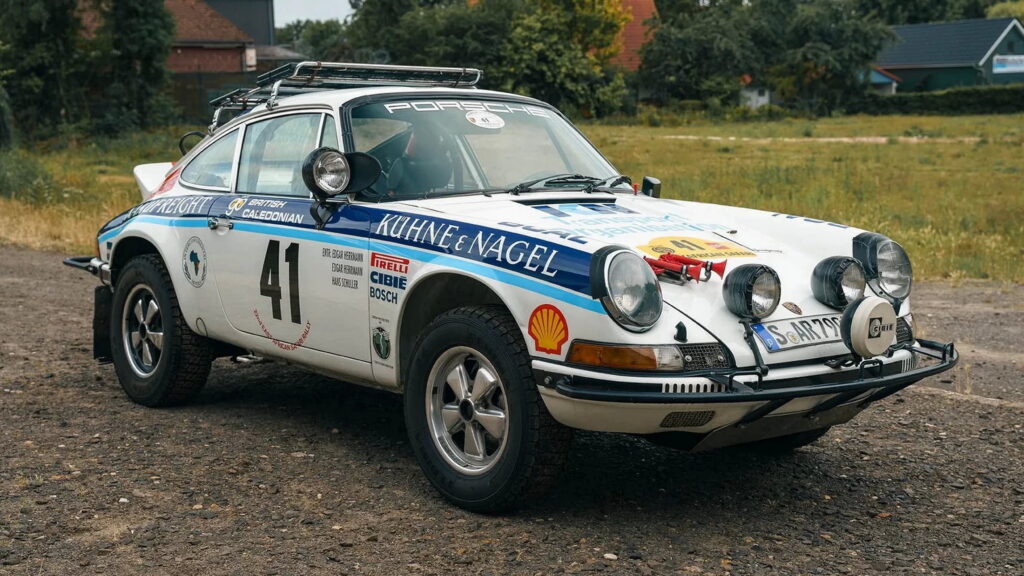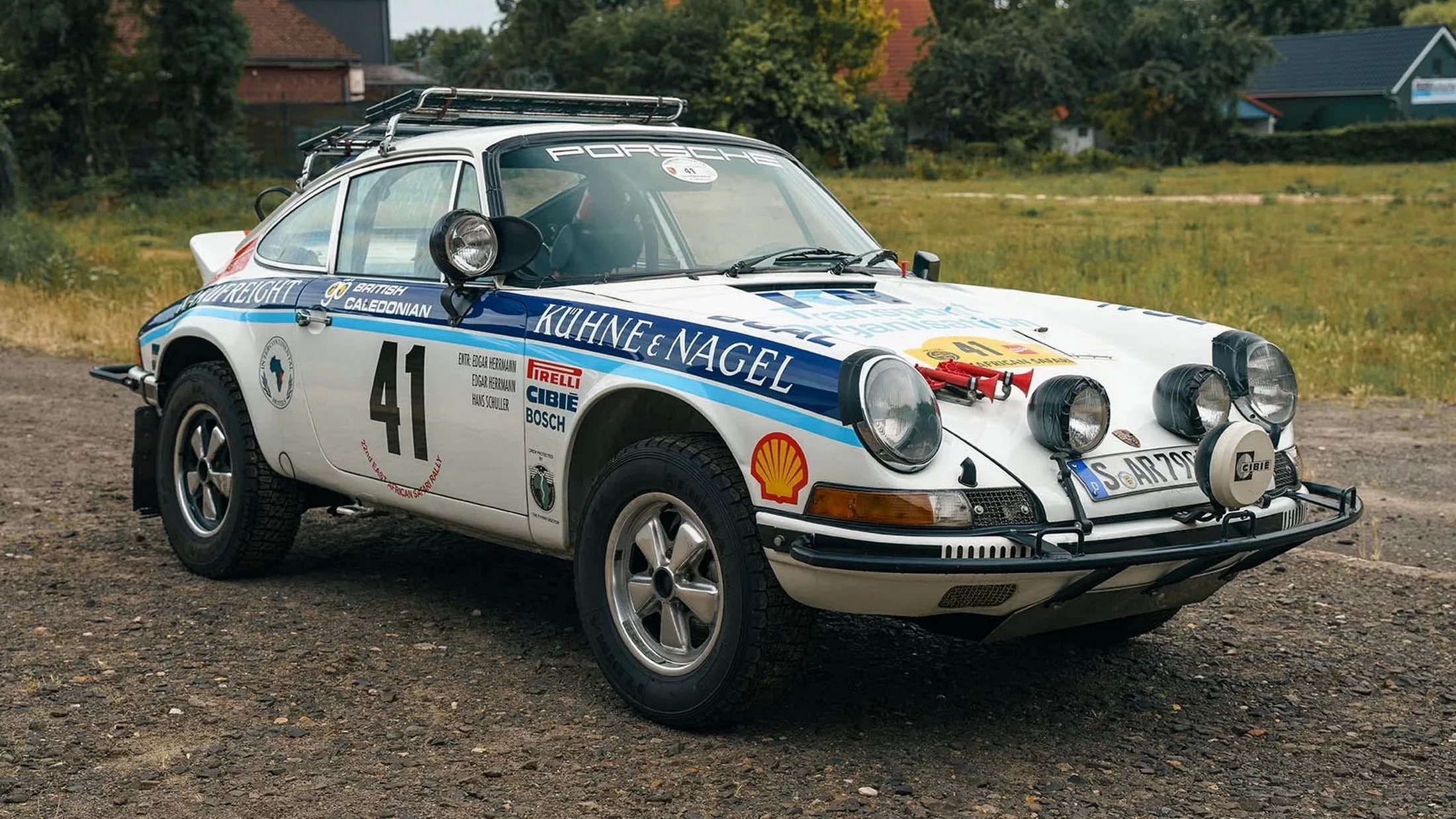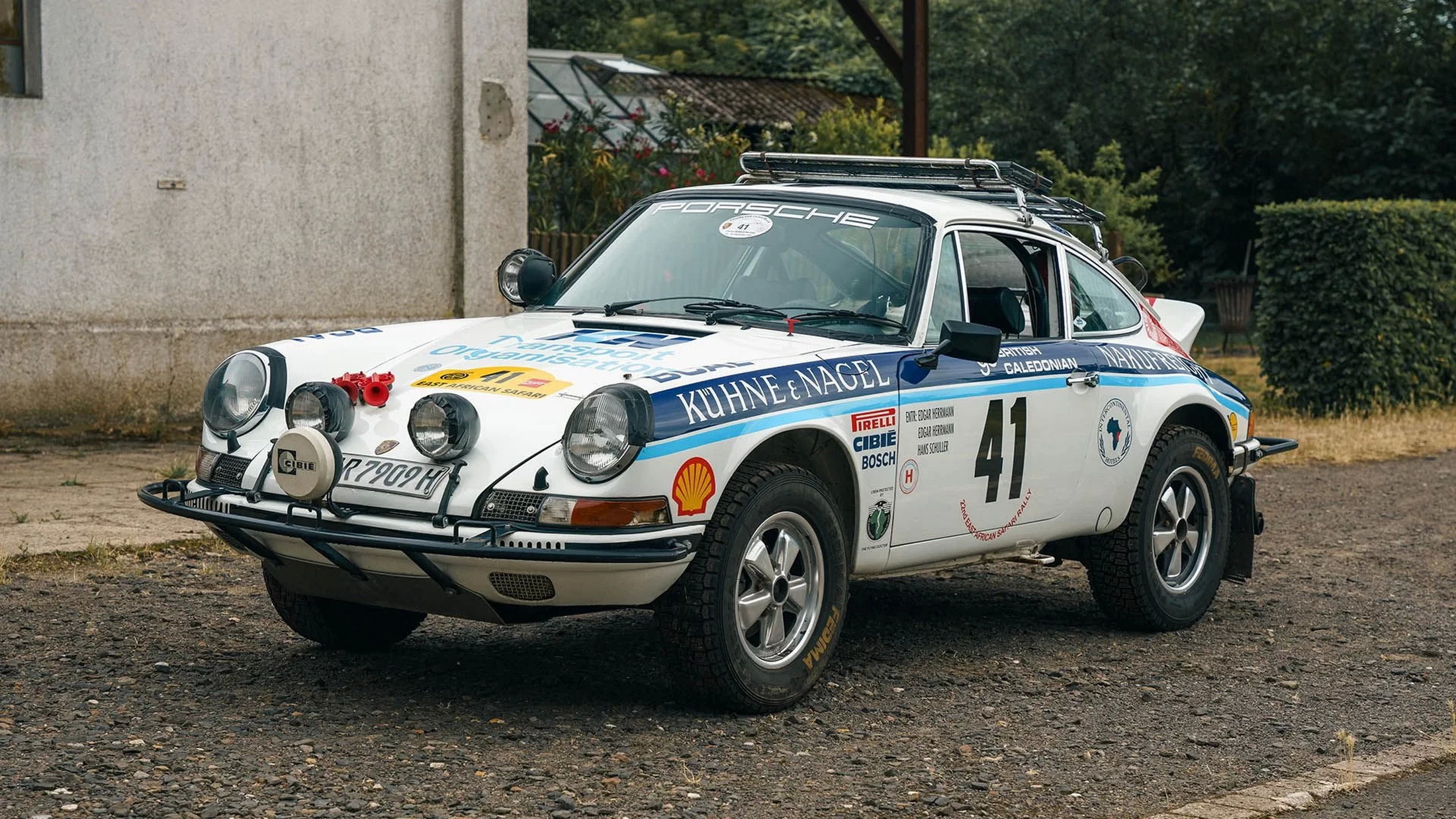The launch of the Porsche 911 Dakar was preceded by a wave of interest in the legendary sports car’s rallying career. With a number of third-party tuned 911s trading on the brand’s off-road history, this is your opportunity to buy one of the cars that actually competed.
This car started life as a Porsche 911 Carrera RS 2.7, which in its own right makes this a rare and highly valuable classic. However, the brand plucked it from the production line as one of just 25 911 Carrera RS 2.7s and RSR 2.8s that were intended to be used as factory racecars.
This example, chassis number 285, was chosen for a very special mission. Along with chassis number 288, it was destined to take on the 1973 East African Safari rally. Although Porsche’s road racing activities were more relevant to its sales department, the legendary Kenyan event was deemed to be the last great rally that the brand hadn’t won.
In order to take on the event, Porsche equipped the car with heavier-duty (and taller) shock absorbers, chassis reinforcements, aluminum skid plates, a larger fuel tank, and, amusingly, “spectator handles” designed to help people watching the event push the car back onto the road in the likely event that it flew off it.
Read: 2023 Porsche Dakar Is The Slowest 911 Since The ’80s, But We Want One So Badly

Prepared to be driven by a British team, this car initially had a yellow livery and Bosch sponsorship logos. Its hopes for a strong performance were dashed just three hours from the finish line, after 3,293 miles (5,300 km) of racing, when engine issues caused by a loosened oil pipe resulted in a DNF.
Later that same year, the car was retuned for the 1,000 Lakes Rally in Finland, and won a creditable 20 of the event’s 43 special stages, eventually finishing third overall. That buoyed everybody’s spirits, and Porsche decided to get it ready for the 1974 East African Safari.
Learning from its failure the previous year, Porsche equipped it with a beefier transmission and shocks, and painted it white with blue stripes, as can be seen here. Sadly, a broken front spindle eventually took it out of the running for the 1974 event, but its sister car took second place and went back to Stuttgart a hero.
Meanwhile, this example stayed in Africa, sold on the spot to a local enthusiast who continued to rally it in the ’70s. By the 2000s, the president and the secretary of the German Carrera RS Club, Gabrielle Mahler-Kurzenberger and Uwe Kurzenberger, heard about the car from its owner Surinder Thatthi, a former FIA World Motor Sport Council representative.
They bought the car (whose engine was seized and whose body was in sore need of attention), and brought it back to Germany, where it received a thorough, three-year restoration. Since then, it has participated in a range of classic rallies and even in the Kurzenbergers’ wedding.
Now, after three years in a museum and a light tune up to get it back in top shape, the car is being auctioned off at Broad Arrow’s Monterey Jet Center Auction, which runs on August 17 and 18. Given its excellent restoration, its rarity, and its competition history, the car is expected to sell for $2.5 to $3 million.











































